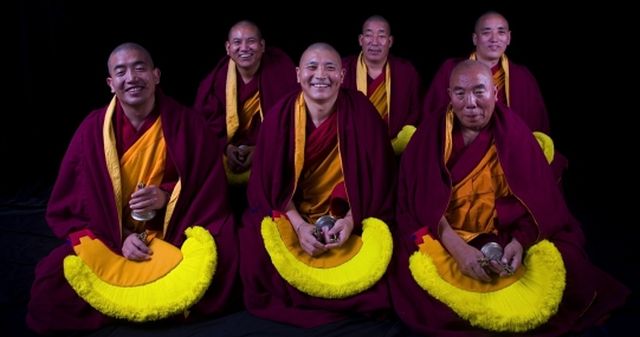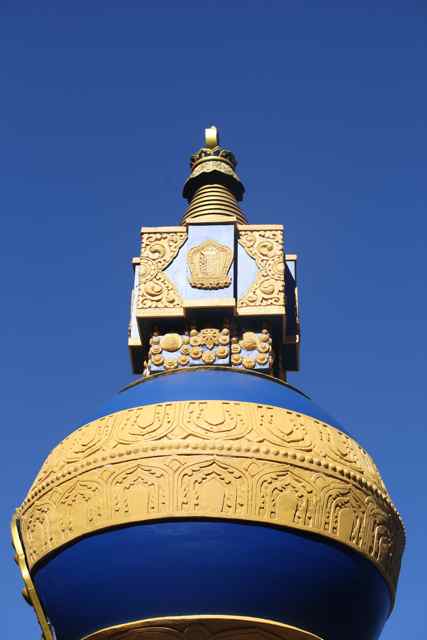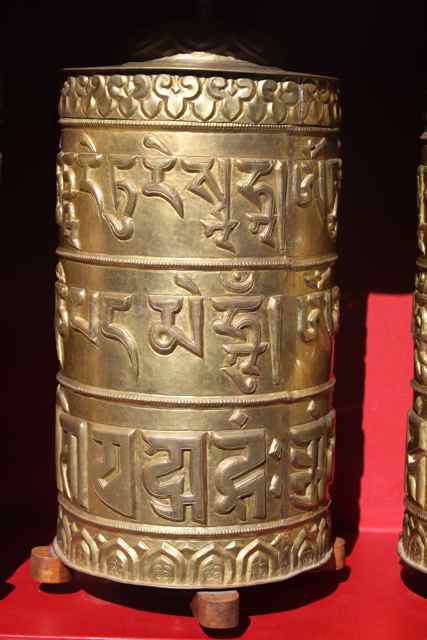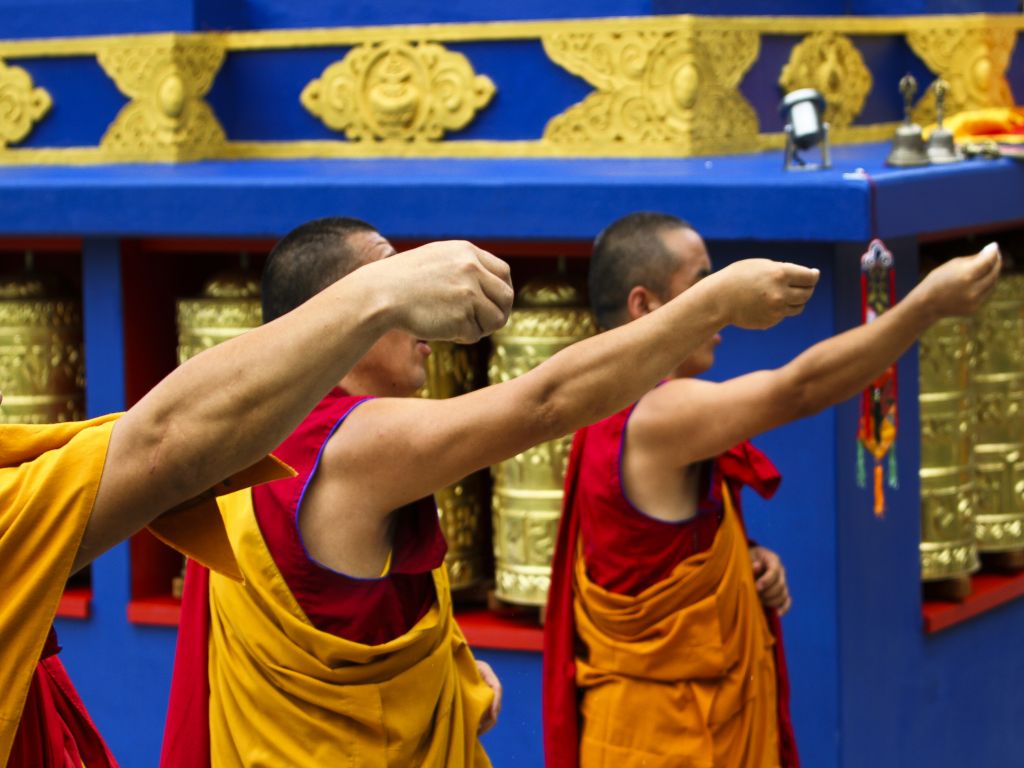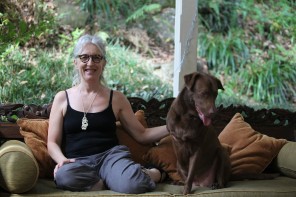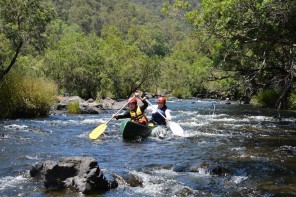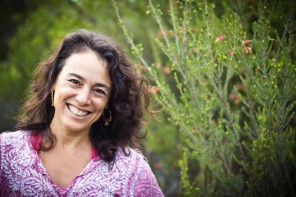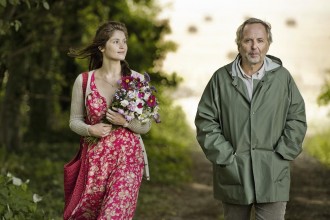It was a special weekend at a special place as the community and the Gyuto Monks came together at the Crystal Castle to celebrate the second anniversary of the building of the World Peace Stupa, writes Candida Baker.
Noooo. It can’t be two years since the Gyuto Monks blessed the beautiful Kalachakra World Peace Stupa – can it?
Apparently it can be, and was, because some of the Crystal Castle’s most beloved friends, the Gyuto Monks of Tibet have just spent five days at the Crystal Castle and the Shambhala Gardens offering their heart-filled program of chanting, meditations and activities, in order to celebrate the Peace Stupa’s second birthday on Saturday October 11, 2014.
For those of us who were there for the blessing of the site back in December 2010, with its beautiful indigenous ceremony and consecration by the monks, watching the stupa rise from its foundations to the eight-metre high glorious gold and blue monument it is today, has been an enriching experience. Before the stupa existed on its large, naturally amphitheatre-styled space, the Castle and its gardens were still a special place – but the stupa has brought with it, not just the presence of the monks, but a sense of spiritual peace even when they are not in residence. For me, the ritual of walking around the clockwise around the stupa three times, turning the golden metal prayer wheels as I go, has an immediate calming effect, and I drop into a meditative state almost immediately.
But although the building of the stupa began in 2010, the idea was created long before then, first occurring to Castle owners Naren and Sono King in 2003 when they were visiting the Buddhist sacred sites in Borobudur, Java.
“We were touched by the beauty and the energy of the monuments, and dreamed of one day building a stupa in the Crystal Castle grounds,” says King. They travelled to Dharamsala in India for a private audience with His Holiness the Dalai Lama and while they were there, they were requested by a high lama, Woser Rinpoche, using a Tibetan form of divination called the ‘mo’, to build the Kalachakra stupa. “He told us that it was specifically for restoring balance to the Earth in times of war, conflict and environmental destruction,” says King, “and during our audience with the Dalai Lama, we were privileged to receive His Holiness’ blessings for the project. Since then the project has also been blessed by other revered Buddhist spiritual leaders, the Karmapa, Gaden Tripa and His Holiness Sakya Trizin.”
The symbolic meaning of a stupa is profound – it is a sacred monument built by the Tibetan Buddhists to represent the process of enlightenment, and is representative of community strength and interdependence. Tibetans believe contributing to the building of a stupa is in itself auspicious, and that once a stupa is finished, the practice of walking clockwise around it can bring great benefit. They are considered to be so powerful that the mere sight of a stupa is said to put one in touch with one’s own innate goodness, inspiring compassion, kindness and good karma. (I might start walking around it as much as I can…)
Kalachakra means ‘Wheel of Time’ and a Kalachakra stupa with its unusual spherical body symbolizes the energy cycle and the essential structure of the cosmos, which is why it is known as the Stupa for World Peace. As masters of the tantric arts, the Gyuto Monks were superbly qualified to oversee and carry out the necessary rituals and ceremonies at each stage of the construction.
The ‘Peace Stupa’, as it’s come to be known, is filled with many sacred objects, scriptures and relics, and again it was during the process and planning stage that King became the recipient of some extraordinary gifts. “When we were in Kathmandu a monastery gifted us with a complete collection of the Buddha’s teachings, 108 volumes of sacred scrolls, as well as the teachings of the first Dalai Lama,” King says. “When we were in Dharamsala a monk came to our guesthouse one evening and very carefully handed us one of his monastery’s most sacred objects: the ceremonial yellow hat of his late teacher, Kirti Tsensup Rinpoche, who was one of the Dalai Lama’s teachers. It was a very moving moment. The generosity of spirit the Tibetans possess makes being in their presence a privilege.”
Forty brass prayer wheels, known as ‘Mani’ wheels were handmade for the stupa by a family in the Kathmandu Valley of Nepal. For around 350 years this family have been creating these extraordinary prayer wheels. The finished wheels contain over 130,000 Om Mani Padme Hum mantras and the Tibetans believe that when a prayer wheel is turned the prayers inside are released into the universe for the benefit of all.
Involvement of the community was an essential part of creating the stupa, and the Castle also celebrated that involvement during the anniversary.
During their ‘anniversary’ stay the Gyuto Monks, together with any visitors who wished to participate, created a number of large Mani Stones, which are round, flat stones inscribed across two rows with the syllables of the sacred Avalokiteshvara mantra, Om mani padme hum, carved in Tibetan script. On the final day of their visit, these sacred stones will be placed around the Kalachakra World Peace Stupa, forming The Mani Way. The monks also performed a universal cleansing ceremony, Theng Khru Yol Khru. This puja, designed to create Peace Energy and cleanse the Buddhafield, first covered the area near the World Peace Stupa and then widened to encompass everything from sea level to the skies.
The monks chanted for approximately two hours and their chants included an invitation to the Buddhas to join with them in reciting the requisite prayers. “This was a unique opportunity to participate in an ancient custom and a powerful ceremony for personal, regional and world transformation,” says Naren King.
| Email: | [email protected] |
| Internet: | www.crystalcastle.com.au |
| Location: | 81 Monet Drive,Mullumbimby, NSW, 2482 |
| Phone: | 02 6684 3111 |
| Facsimile: | 02 6684 1196 |

